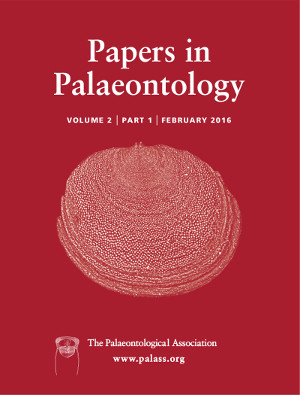Reg. Charity No. 1168330

A new species of diving duck from lacustrine deposits inside the middle Miocene High Rock Caldera in north‐west Nevada (USA) appears to be more closely related to the stiff‐tailed ducks Oxyura and Nomonyx than to other Oligocene and Miocene anatid taxa. The new species, Lavadytis pyrenae sp. nov., is represented by 24 fragments of humeri, tibiotarsi, tarsometatarsi, coracoids, a scapula and carpometacarpi, and several of the specimens are from juvenile individuals, indicating that the caldera palaeolake was a breeding site. The humerus has a ‘closed’ non‐pneumatic ventral pneumotricipital fossa, lacks a capital shaft ridge, has a cranial carpal fovea and has a pronounced medial epicondyle on the tibiotarsus. Many of the osteological features present in this new species also occur (convergently) among derived diving duck clades and therefore suggest that this extinct species foraged by diving. This new species’ phylogenetic position close to the extant species in Nomonyx and Oxyura, its middle Miocene age (16.1–14.6 Ma) and its geographical location in North America are consistent with molecular clock analyses placing the origin of the stem leading to Oxyura + Nomonyx at approximately 15.9 Ma in the New World. This new species could indicate that the stem of the Oxyura + Nomonyx clade had reached the New World by the middle Miocene and that the diversification present among New World Oxyurini/Oxyurinae began temporally close to the climatic warming of the Middle Miocene Climatic Optimum.